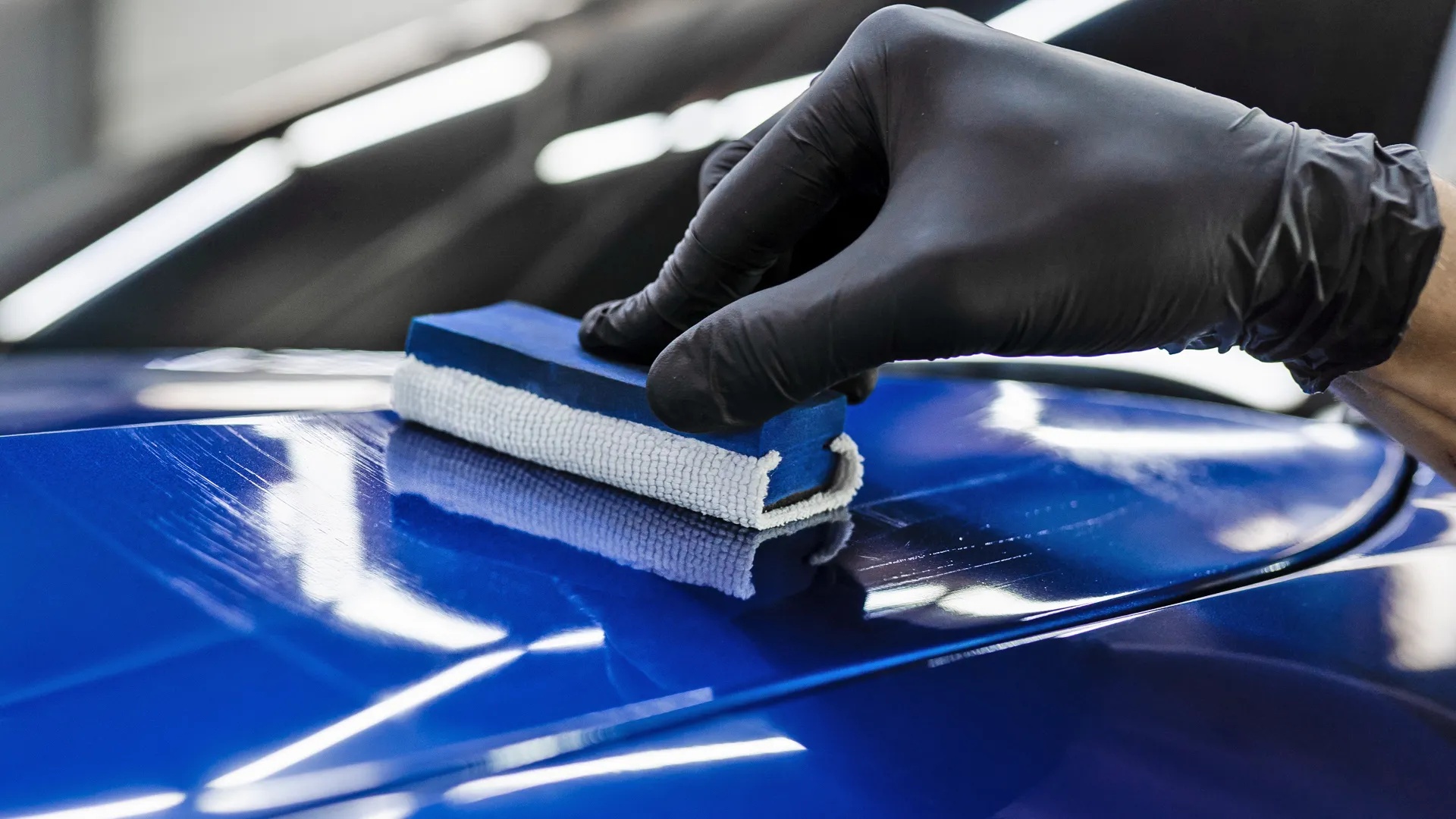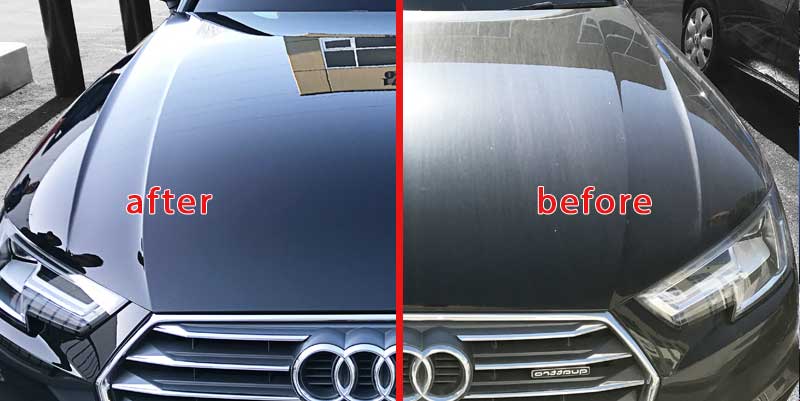Open the Benefits of Ceramic Layer for Ultimate Automobile Protection
Ceramic layer represents a considerable advancement in vehicle defense, supplying a resistant barrier against different ecological risks. Understanding the scientific research behind ceramic layers and their application procedure is vital for any kind of automobile owner seeking to maximize their financial investment.
What Is Ceramic Covering?
Ceramic finishing, in significance, is a liquid polymer applied to the exterior surfaces of automobiles to provide a durable protective layer. This advanced modern technology supplies a lasting guard versus various environmental pollutants, consisting of UV rays, dust, roadway gunk, and chemical discolorations. Unlike traditional wax or sealants that require constant reapplication, ceramic layers bond with the vehicle's paint, creating a semi-permanent layer that enhances the overall resilience of the surface.
The formula of ceramic layers normally consists of silicon dioxide (SiO2), which adds to its high resistance to abrasion and chemical damages (Blessed Touches Detailing Ceramic Coating). This protective layer not only improves the visual allure of the automobile by supplying a glossy finish but additionally streamlines maintenance. With ceramic finishings, cleaning the vehicle becomes extra reliable, as pollutants are less most likely to comply with the surface area
Moreover, the application of ceramic coverings can dramatically enhance the lorry's resale worth. A well-kept exterior secured by ceramic covering is often extra appealing to potential purchasers, as it shows a commitment to car treatment. In general, ceramic covering stands for a significant innovation in automobile protection, supplying robust benefits for vehicle lovers and everyday vehicle drivers alike.
How Ceramic Layer Works
The performance of ceramic coating exists in its sophisticated chemical structure and application process. This safety layer is largely made up of silica dioxide (SiO2), which forms a solid covalent bond with the vehicle's paint surface. When applied, the coating undertakes a chain reaction that develops a durable, hydrophobic layer, boosting the surface area's natural protective residential or commercial properties.

When treated, the ceramic finishing works as an obstacle against environmental pollutants such as UV rays, dirt, chemicals, and oxidation. Its hydrophobic nature makes water grain and roll off the surface area, which not just aids maintain the car clean but additionally lessens the risk of discolorations and etching. Generally, the complexities of the chemical composition and the precision of the application process are key to the remarkable performance of ceramic finishings in lorry security.
Trick Advantages of Ceramic Layer
A notable advantage of ceramic finishing is its ability to provide lasting defense for an automobile's outside. Unlike conventional wax or sealers, which may last just a few months, ceramic layers check out this site can withstand for a number of years, developing a resilient guard against environmental contaminants. This long life substantially decreases the regularity of reapplication, therefore saving money and time in the future.
Furthermore, ceramic finishings enhance the lorry's look by conveying a high-gloss finish that enriches the paint color. This hydrophobic property not only fends off water yet also assists in stopping dust and gunk from adhering to the surface, making cleansing simpler and a lot more reliable.
One more secret benefit check this site out is the security against UV rays, which can trigger paint oxidation and fading gradually. Ceramic coverings act as a barrier, preserving the original look of the vehicle for a prolonged duration. Furthermore, they give resistance versus chemical stains from contaminants such as bird droppings, tree sap, and road salt, making sure that the car continues to be in immaculate problem.
Application Refine Explained
Accomplishing ideal outcomes with ceramic finishing needs a thorough application procedure that makes sure correct bonding and insurance coverage. The first action entails completely cleaning the vehicle's surface. This includes cleaning, decontaminating, and drying to eliminate any type of dust, gunk, or previous wax residues that could hinder attachment.

After making sure the surface is flawless, the ceramic finishing can be used. This is usually performed in a controlled environment to avoid contamination from dust or particles. Utilizing a soft applicator, the coating is spread out evenly throughout see the surface area in areas, enabling complete coverage. It's vital to adhere to the producer's instructions regarding curing layers and times, as some finishes require numerous layers for optimum protection.
Maintenance Tips for Long Life
To make sure the durability of your ceramic covering, regular maintenance is necessary. Avoid rough cleaning agents as they can break down the layer.
After cleaning, think about applying a spray sealer made for ceramic layers. This will certainly boost the hydrophobic residential or commercial properties and expand the life of your covering. Furthermore, make sure that you dry your vehicle completely with a plush microfiber towel, as water areas can form if entrusted to air completely dry.
It is additionally crucial to prevent automated auto washes, specifically those with brushes, as they might damage the finishing. Instead, choose touchless washes or hand laundries.
Inspect your covering occasionally for any type of indicators of degradation. If you see a decrease in hydrophobicity, take into consideration a maintenance gloss or an expert information to invigorate the coating.
Lastly, keep your car parked in a shaded location or utilize a cars and truck cover when not being used to protect it from UV damage. Following these maintenance suggestions will certainly ensure your ceramic layer supplies ideal protection for several years ahead.

Conclusion
To conclude, ceramic finishing offers significant benefits for automobile security and aesthetics. Its advanced formulation provides a powerful defense versus UV rays, dust, and chemical discolorations while improving the lorry's glossy look. The hydrophobic residential properties help with ease of upkeep, guaranteeing that lorries stay visually appealing gradually. By implementing ceramic finishing, automobile owners can efficiently preserve their financial investment and prolong the long life of their vehicles in the face of ecological difficulties.
Ceramic finishing, in essence, is a fluid polymer used to the outside surface areas of lorries to offer a sturdy safety layer. Unlike traditional wax or sealers that require constant reapplication, ceramic layers bond with the vehicle's paint, developing a semi-permanent layer that improves the general longevity of the surface area.
With ceramic finishes, cleaning the automobile ends up being a lot more reliable, as contaminants are less most likely to stick to the surface area.
On the whole, the complexities of the chemical make-up and the precision of the application process are essential to the amazing performance of ceramic layers in lorry security.
A noteworthy advantage of ceramic finish is its capacity to supply long-lasting defense for an automobile's outside.